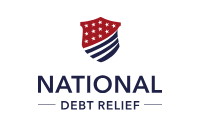How to Create a Realistic Debt Repayment Plan

Facing debt can be daunting. Credit card balances, student loans, medical bills, tax obligations, and more can quickly accumulate, causing anxiety and financial instability. However, creating a realistic debt repayment plan can dramatically transform your financial future, relieve stress, and restore financial stability. This guide walks you through step-by-step strategies for building a manageable, effective debt repayment plan tailored specifically to your needs.
Step 1: Assess Your Current Debt Situation
Before constructing your repayment plan, begin by clearly understanding your debt situation. Many people feel overwhelmed simply because they don’t fully grasp the scope of their financial obligations.
Action Steps:
- List All Debts: Write down every debt you owe, including credit cards, student loans, medical bills, mortgages, auto loans, and tax debt. Include total balances, minimum payments, interest rates, and payment due dates.
- Review Credit Reports: Obtain your credit reports from the three major bureaus—Experian, Equifax, and TransUnion—via AnnualCreditReport.com to ensure accuracy. If inaccuracies exist, consider using a reputable Credit Repair service to correct them.
Having a precise overview helps establish clarity and a firm foundation for your repayment plan.
Step 2: Set Clear, Realistic Goals
Effective debt repayment plans hinge on clear, achievable goals. Your goals might be short-term (e.g., pay off credit card debt within 18 months) or long-term (e.g., become debt-free in five years).
Action Steps:
- Prioritize Debt: Determine the order in which you’ll pay off your debts, typically prioritizing high-interest obligations first (known as the “avalanche method”) or smaller debts for motivational quick wins (the “snowball method”).
- Set Timeframes: Clearly define when you plan to pay off each debt, considering your monthly budget and overall financial capacity.
Step 3: Create a Monthly Budget
Your monthly budget is the heart of your debt repayment strategy. To successfully eliminate debt, you need a realistic understanding of your monthly income and expenses.
Action Steps:
- Track Your Spending: Carefully monitor your expenses for one to two months. Use budgeting tools like Mint or You Need a Budget (YNAB) to simplify tracking.
- Identify Areas to Cut Back: Look for non-essential spending that can be reduced or eliminated. This could include subscriptions, dining out, entertainment, or discretionary shopping.
- Allocate Funds to Debt: Designate a clear monthly amount toward debt repayment—ideally more than your minimum required payments—to accelerate progress.
Step 4: Explore Debt Consolidation Options
Debt consolidation simplifies your repayment strategy by combining multiple debts into a single loan, often with a lower interest rate or monthly payment. This strategy can reduce stress and streamline your repayment.
Action Steps:
- Consider Debt Consolidation Loans: Evaluate debt consolidation loans from reputable lenders. Consolidation can simplify your payments and potentially lower your interest rate, significantly accelerating repayment.
- Credit Card Balance Transfers: Look for promotional low-interest or 0% balance transfer offers to consolidate high-interest credit card debt.
Step 5: Negotiate Debt Settlements
If your debt feels insurmountable, debt settlement may be an option. Settlement involves negotiating directly with creditors to reduce your overall debt balance, typically in exchange for a lump-sum payment.
Action Steps:
- Contact Creditors: Reach out directly to your creditors to negotiate settlements, especially if you’re behind on payments or facing significant hardship.
- Seek Professional Help: If negotiating feels daunting or unsuccessful, services like National Debt Relief specialize in debt settlement negotiations, often significantly reducing debt balances for qualified individuals.
Step 6: Address Specific Types of Debt Strategically
Different debts require distinct strategies due to their unique nature, interest rates, and consequences of default.
Credit Card Debt:
- Prioritize cards with high interest rates.
- Consider consolidating balances onto lower-interest or zero-percent introductory cards.
Student Loan Debt:
- Explore refinancing or income-driven repayment plans through Federal Student Aid.
Medical Debt:
- Hospitals and healthcare providers frequently negotiate lower balances or flexible repayment plans.
Mortgage and Auto Loans:
- Refinancing could reduce your monthly payments, freeing more cash for higher-interest debts.
Tax Debt:
- Unresolved tax debt can lead to severe penalties. Address tax obligations swiftly through payment plans, settlements, or specialized services like Tax Debt Relief, which negotiate with the IRS on your behalf.
Step 7: Improve and Protect Your Credit Score
Maintaining or improving your credit score is essential to long-term financial health and affects your debt repayment options.
Action Steps:
- Pay Bills on Time: Consistent on-time payments positively impact your credit score, demonstrating reliability to creditors.
- Monitor Credit Utilization: Aim to keep credit utilization below 30% of your available credit limits.
- Credit Repair Services: If negative entries significantly impact your credit score, consider professional Credit Repair services to dispute inaccuracies and rebuild your score.
Step 8: Maintain Financial Discipline and Motivation
Repaying debt is a marathon, not a sprint. Consistency and financial discipline are vital.
Action Steps:
- Set Milestones: Celebrate incremental successes to maintain motivation. Paying off each debt, even small ones, provides tangible progress.
- Stay Accountable: Share your goals with a trusted partner, family member, or financial advisor who can offer encouragement and accountability.
- Adjust Regularly: Revisit and adjust your repayment strategy as your financial situation evolves, staying adaptable to unexpected financial changes or setbacks.
Step 9: Plan for Emergencies
Without emergency planning, unexpected expenses can derail your debt repayment progress.
Action Steps:
- Build an Emergency Fund: Even while repaying debt, allocate some savings toward an emergency fund. Initially aim for $500 to $1,000, eventually growing it to three to six months of expenses.
- Insurance Coverage: Ensure adequate health, auto, homeowners/renters, and life insurance to avoid financial shocks that could derail your repayment progress.
Step 10: Seek Professional Financial Advice
Sometimes, professional assistance is the best way to navigate complex financial circumstances and maximize debt repayment efficiency.
Action Steps:
- Financial Counselors: Nonprofit organizations offer financial counseling at low or no cost, providing personalized strategies tailored to your situation.
- Professional Debt Relief Services: Companies like National Debt Relief can offer tailored plans to significantly reduce your debt load through settlement programs.
- Tax Experts: Engage specialized tax relief services for complex tax debts or IRS issues, ensuring the most advantageous resolution possible.
Step 11: Envision Your Financial Future
Remaining debt-free requires long-term planning and behavioral changes.
Action Steps:
- Establish Healthy Financial Habits: Continue budgeting, avoid unnecessary debt, and practice financial mindfulness.
- Invest in Financial Literacy: Enhance your knowledge about personal finance, investing, and retirement planning.
- Consider Investment and Retirement Accounts: Once debt-free, allocate funds toward retirement savings, mutual funds, or even alternative investment options such as a Gold IRA to secure your financial future.
Final Thoughts: Transforming Debt into Financial Opportunity
Creating and executing a realistic debt repayment plan is one of the most empowering financial actions you can take. From assessing your current debts to negotiating settlements, and ultimately rebuilding your credit, each step moves you closer to financial independence.
Utilize trusted resources like National Debt Relief for debt settlement, Tax Debt Relief to resolve complex tax situations, and reputable Credit Repair companies to enhance your credit score. With patience, discipline, and the right strategies, debt freedom isn’t just possible—it’s within your grasp.
Your financial future awaits—take action today and reclaim control over your money, life, and peace of mind.
Explore Our Categories

Credit Cards

Debt

Loans

Insurance

Retirement

Home Buying

Investing

Taxes
Free Yourself From Debt

National Debt Relief
✅ Reduce Your Debt – Pay Less Than You Owe!
✅ One Simple Monthly Payment – No More Juggling Bills.
✅ Get Relief From Credit Cards, Medical Bills & More
Ranked #1

